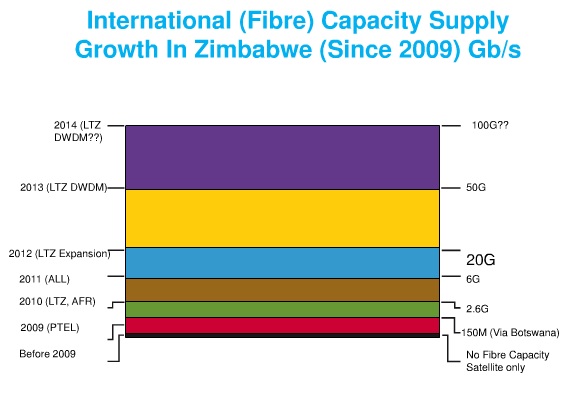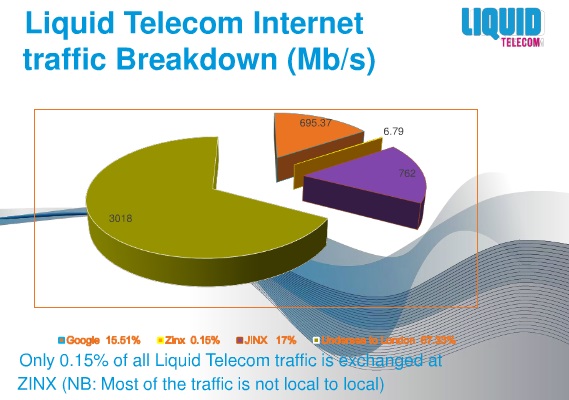Local internet traffic stressed in Zimbabwe as international capacity grows
Broadband Forum 2014, recently held in Harare, Zimbabwe, gave local entrepreneurs the opportunity to engage with other successful Zimbabwean businesses. The event also shed light on Zimbabwe’s broadband infrastructure, explained the importance of value-added services in the mobile broadband era, and highlighted opportunities for local data hosting.
A presentation from Liquid Zimbabwe (owner of 8,000km of fibre, including connections between Zimbabwe and South Africa and Zambia) immediately stands out for its quality take on Zimbabwe’s broadband situation. The 30 slides are often promotional in nature, but at the same time, Liquid Telecom provides unique visuals and recommendations how to make internet access more efficient.
Basically…
Zimbabwe’s international fibre capacity has grown from 150 Mbps in 2009 to 50 Gbps in 2013. Much of the international capacity is due to a Zimbabwe-South Africa fibre link (5 Gbps is undersea capacity). 4km per day is being trenched to extend fibre optic routes.
Most internet traffic in Zimbabwe is not local to local (67% goes undersea to London). There’s hardly any traffic between Zimbabwe and Zambia or Zimbabwe and Botswana. Only 10 of the top 50 Zimbabwean websites are hosted in Zimbabwe. Local content is needed (networks providers and content providers can partner), along with network peering and IXPs. But, data centres require power and connectivity.
There are many challenges facing greater broadband roll-out and local content creation.
- Vague ICT policy
- Sub-par regulatory conditions
- Lack of cooperation among government departments
- Poor infrastructure (roads, power)
- Lack of coordination between telecoms operators
- Trust remains a general business issue in Zimbabwe
Source:














 Twitter
Twitter Facebook
Facebook Pinterest
Pinterest